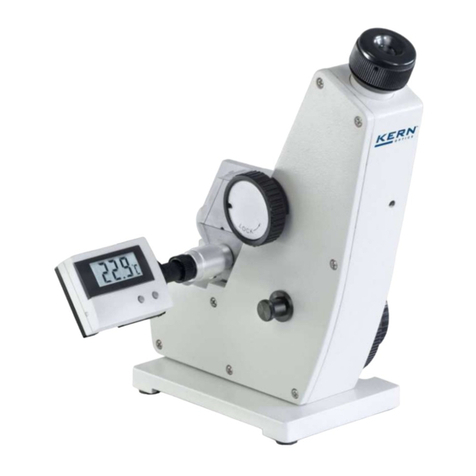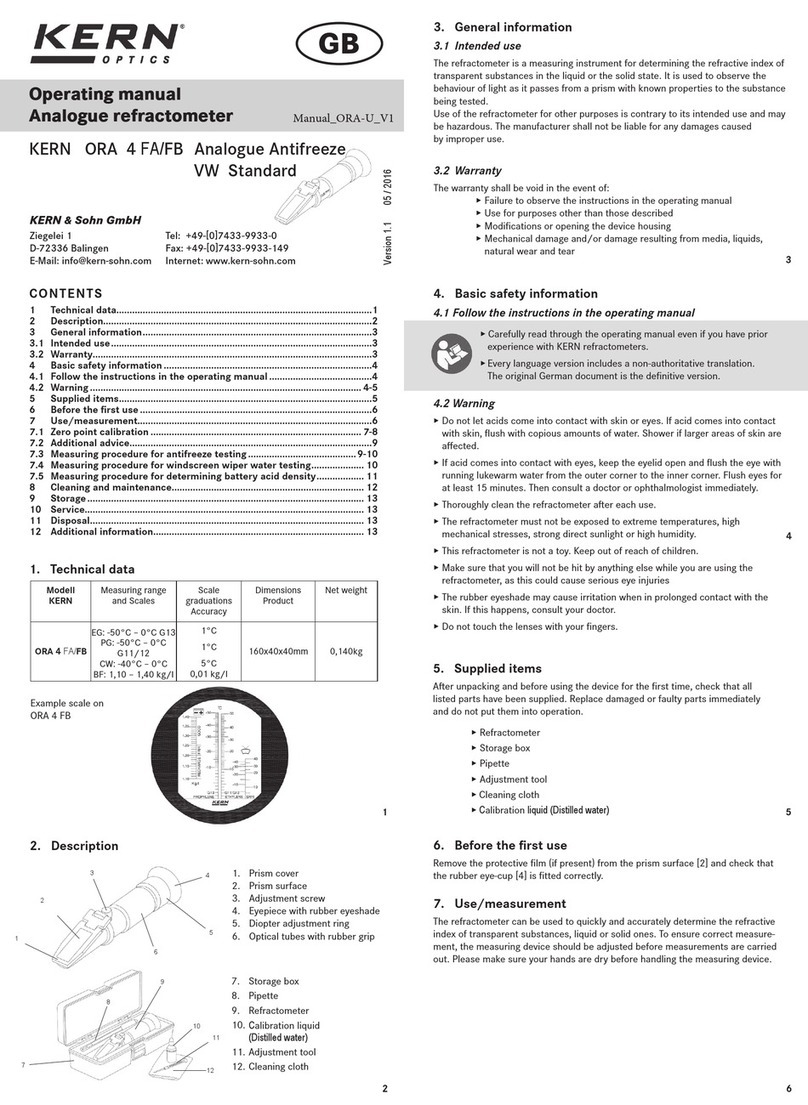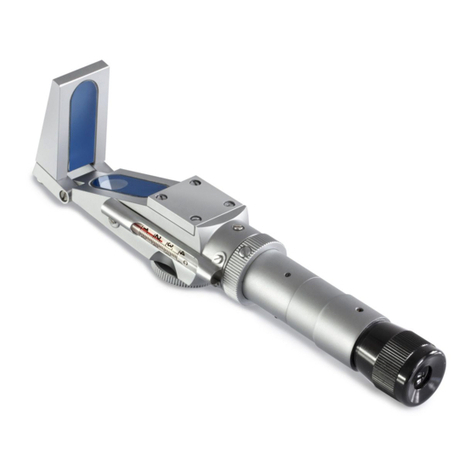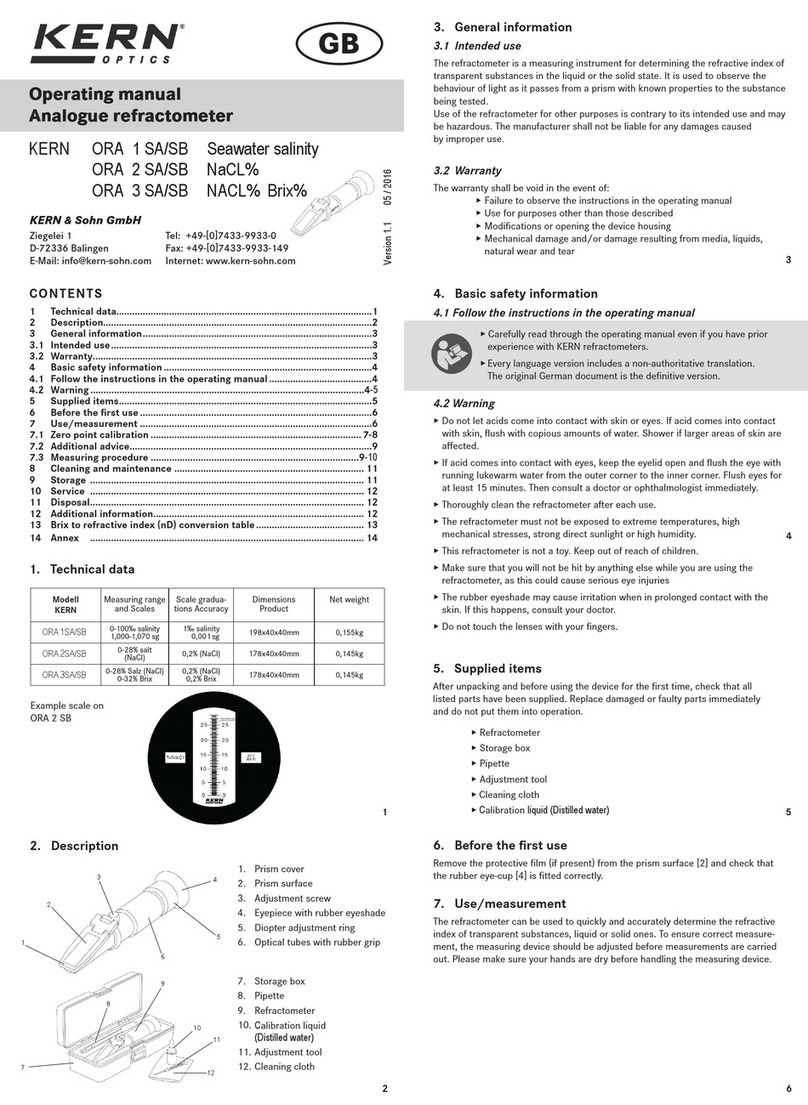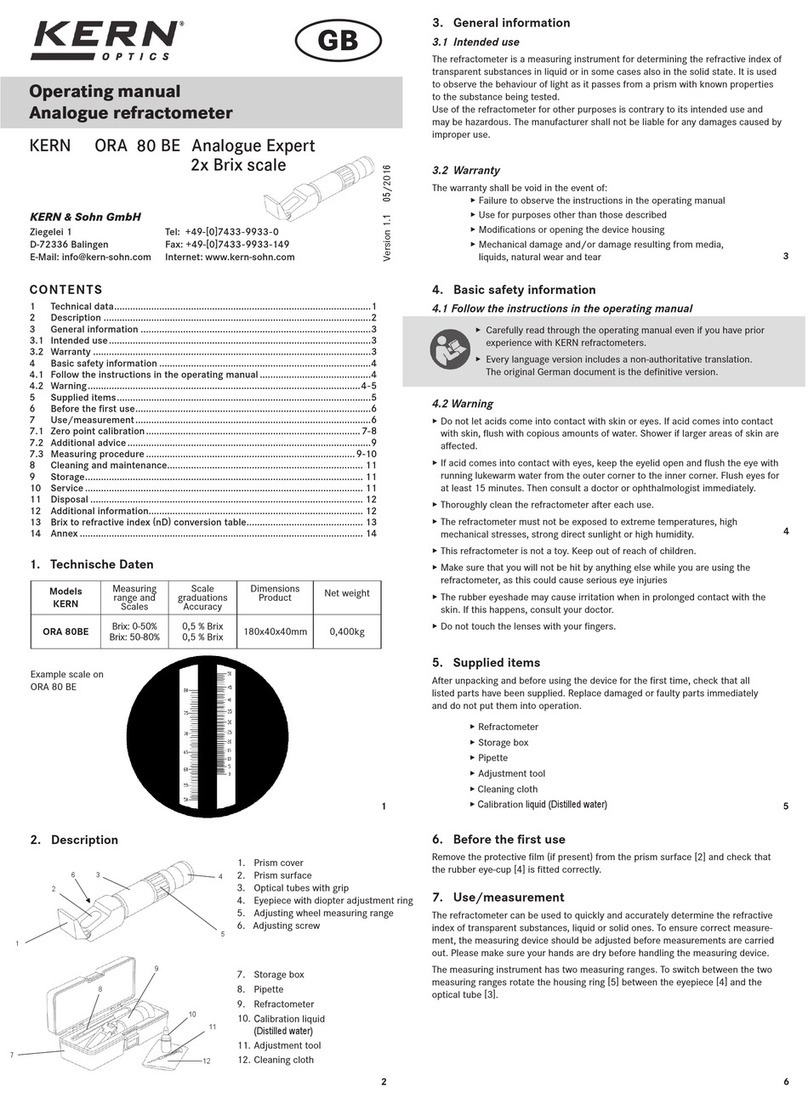
ORA-1SA-2SA-3SA-BA-e-1510 8
7.1 Zero point calibration
Hold up the refractometer against a sufficiently bright light source and look
through the eyepiece [5], holding the rubber eyeshade [4] closely against your
eye/glasses.
Rotate the eyepiece [5] to adjust it for your eyesight, until you can see the
scale sharply.
Open the prism cover [1].
Thoroughly clean the prism [2] and the underside of the prism cover [1] using
a soft cloth or soft paper (with alcohol if necessary), and wipe dry. Water
should only ever be applied to the measuring prism, not to other parts of the
device.
Now apply a few drops of the calibration liquid [10] onto the prism surface [2].
close the prism cover [1]. The amount of fluid should be sufficient to moisten
most of the prism surface. There should not be any air bubbles between the
measuring prism [2] and prism cover [1].
Wait about 30 seconds to allow the temperatures of the test fluid and prism to
equalise.
Look through the eyepiece [4] while pointing the refractometer's prism surface
[2] at a bright light source.
Through the eyepiece [4], you will see a bright and a blue field. The boundary
line between them shows the refractive index value on the scale which is also
visible through the eyepiece [4].
Use the supplied adjustment tool [11] to turn the adjustment screw [3] behind
the prism surface [2] (under the rubber cap), and adjust the scale so that the
measuring device is optimally set up. The bright/dark boundary line should be
at 0% Brix. For refractometers which are not set to 0% Brix using distilled
water and have a special calibration fluid, set the bright/dark boundary line to
the calibration line in the prism. The room temperature should be +20°C.
For refractometers without automatic temperature compensation (ATC):
Convert the measured value to take account of the deviation in room and
sample temperature from +20 °C. (See the table in section 13 at the end of
this instruction manual.)
Repeat step 4 (cleaning).
7.2 Automatic temperature compensation (ATC)
Automatic temperature compensation (ATC).
The handheld refractometer is equipped with automatic temperature compensation.
This automatically compensates for measurement differences resulting from
differences in sample temperatures. It operates between +10 °C and +30 °C.
ATC eliminates the need to convert values using a temperature correction table.












